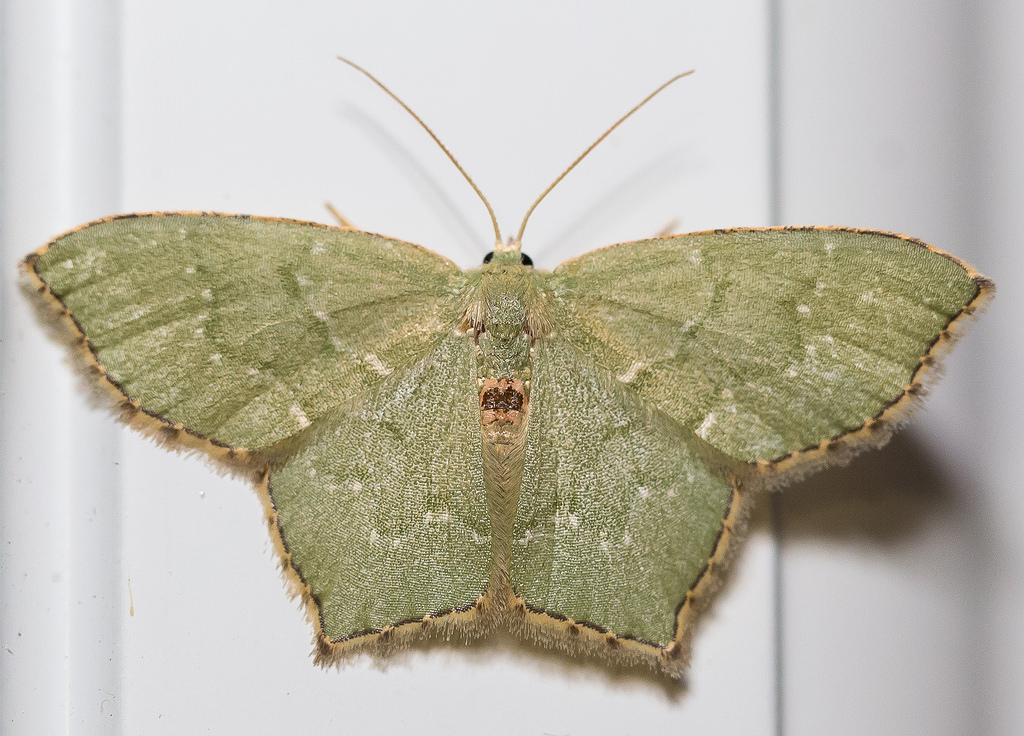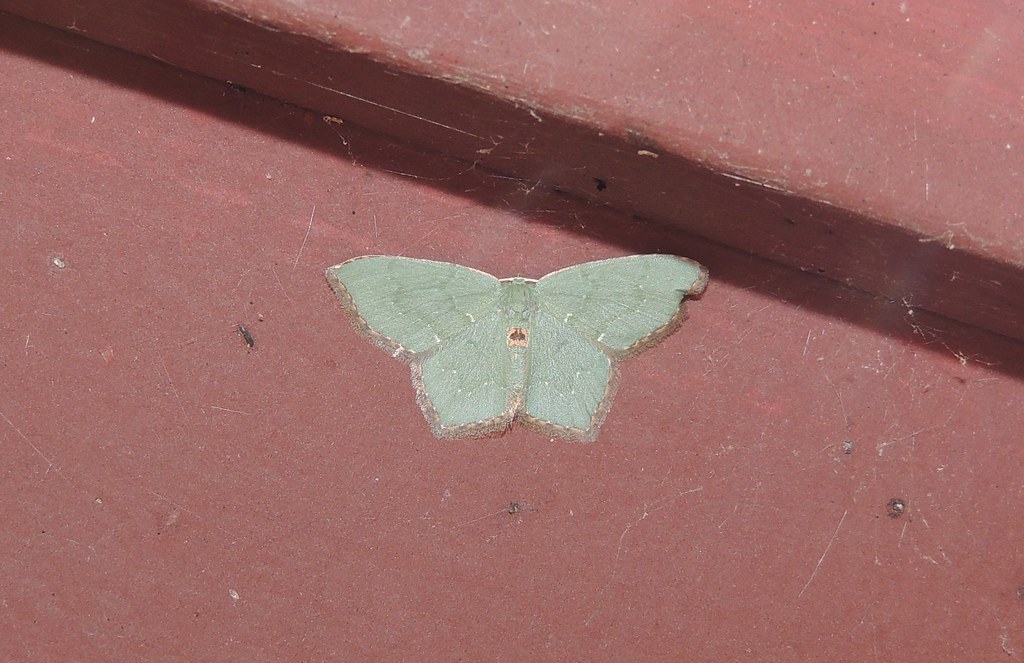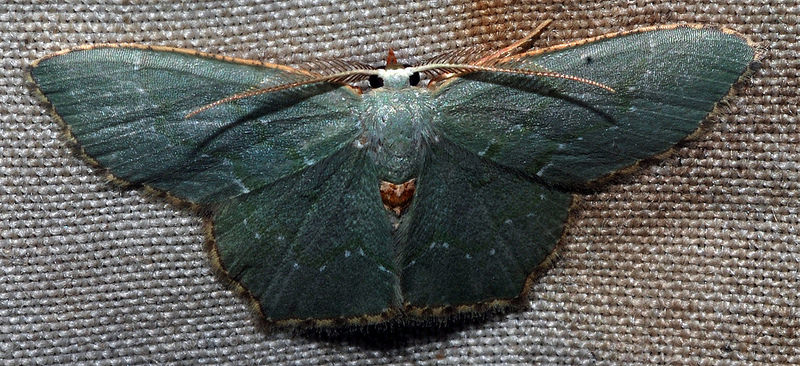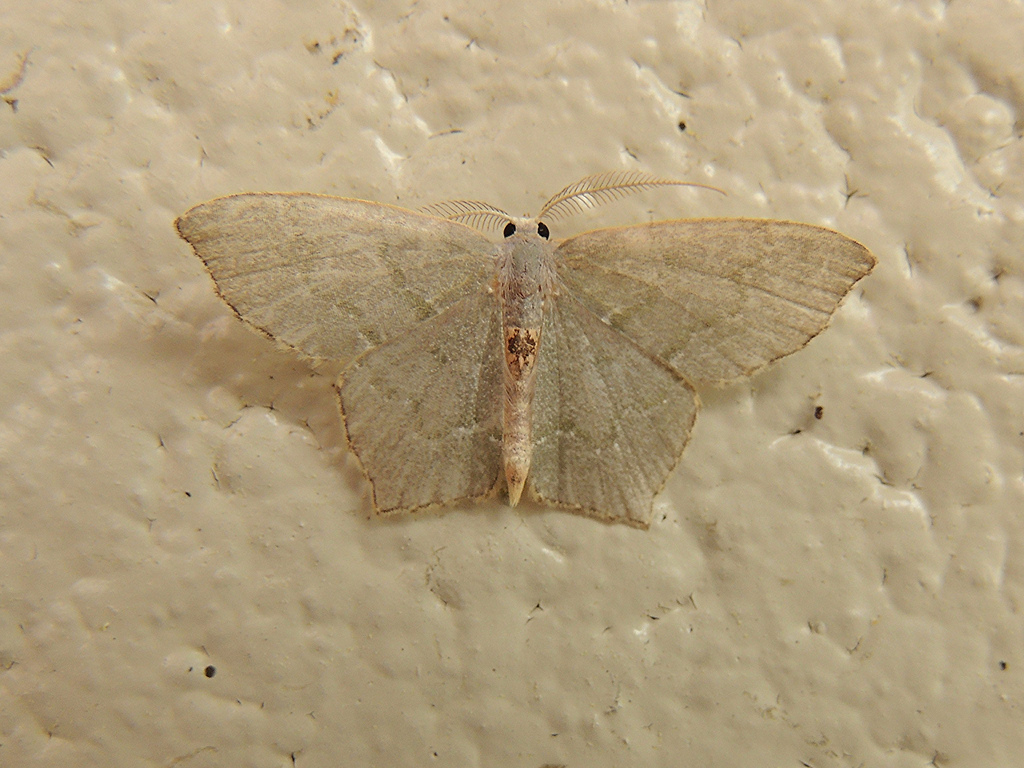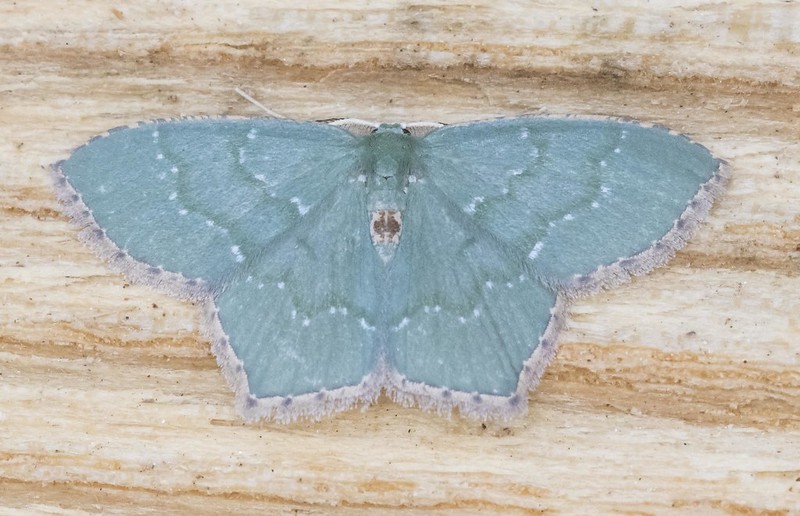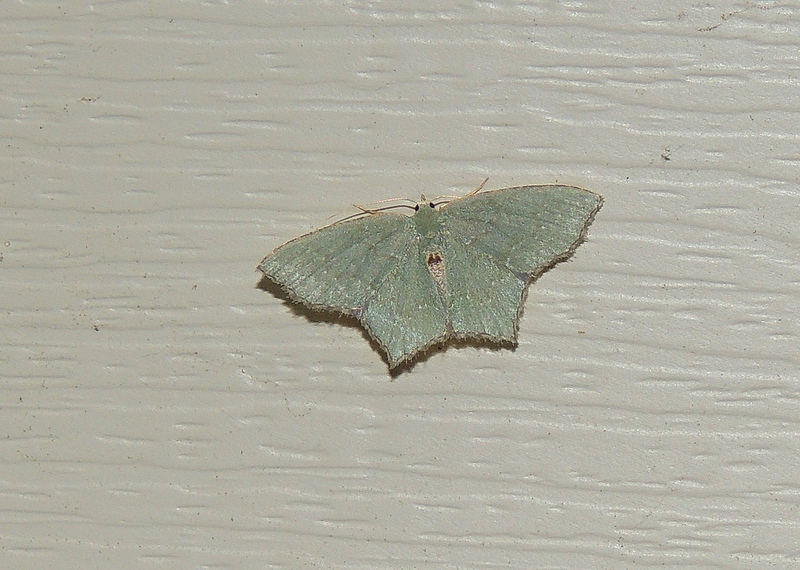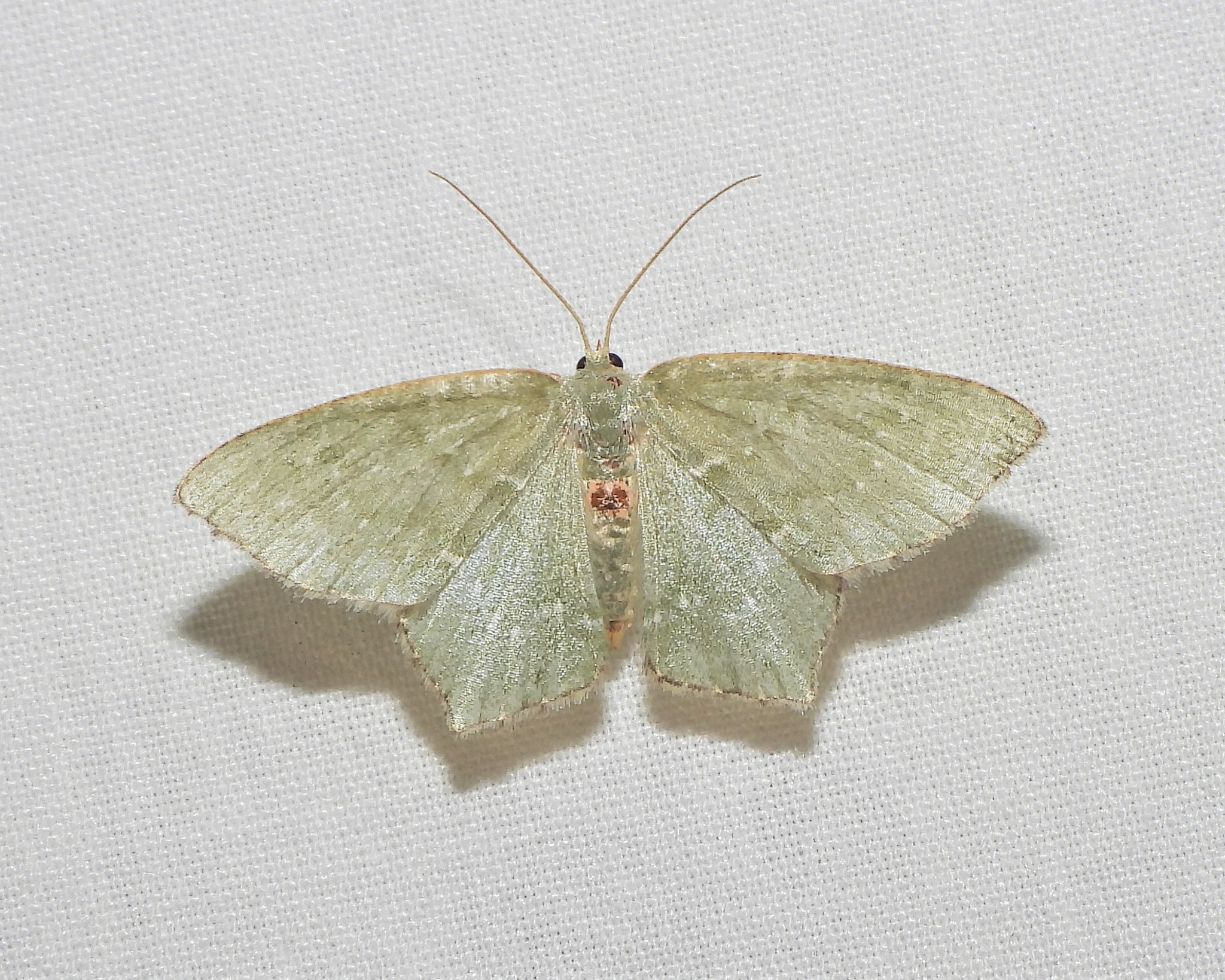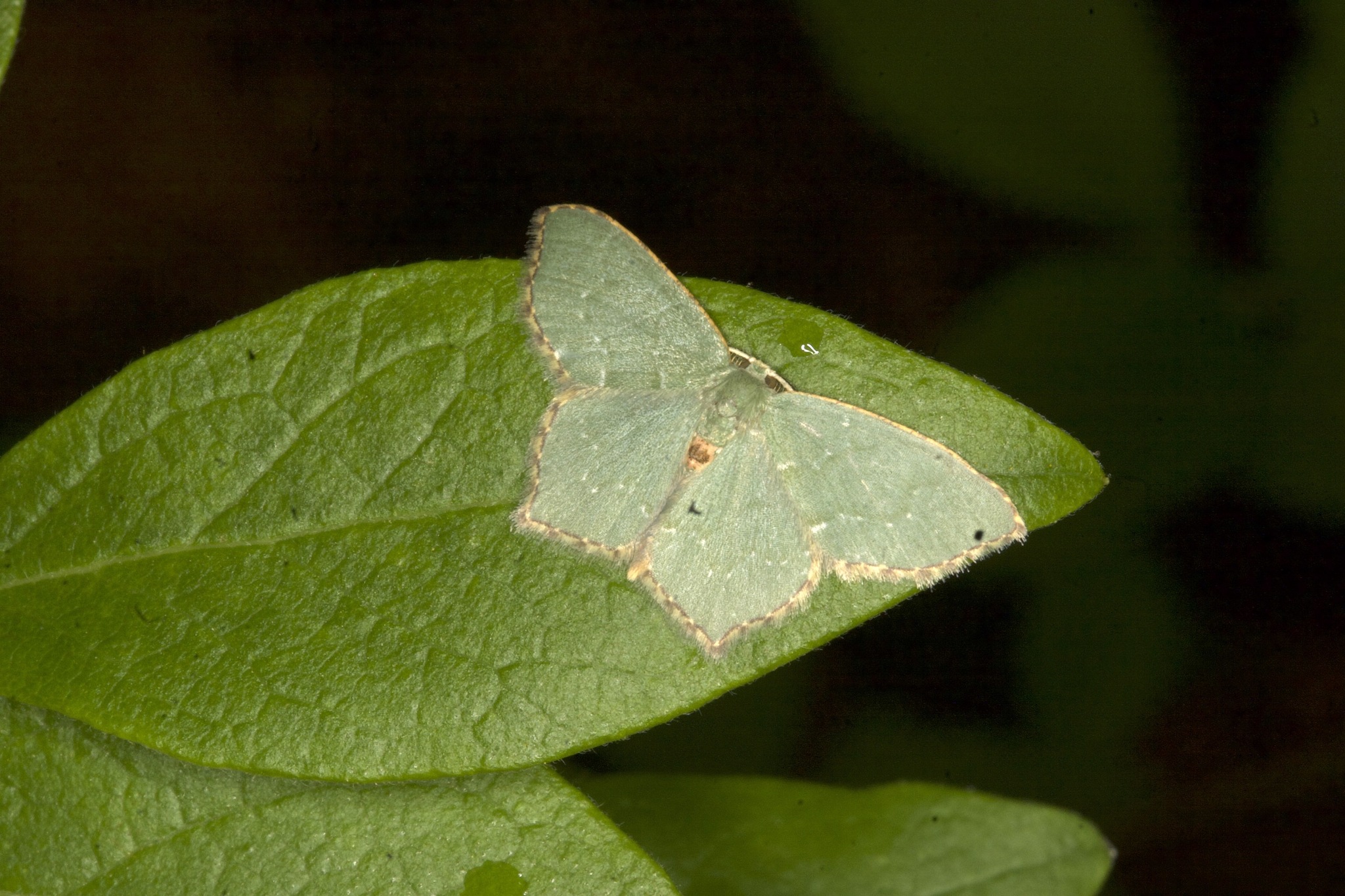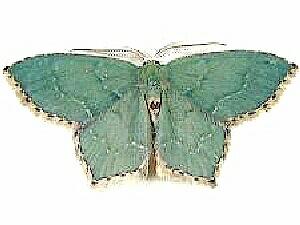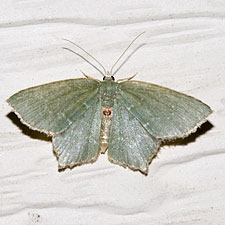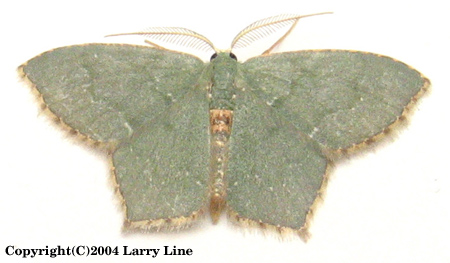Map Snapshot


















99 Records
Relationships
Hosts plants include Bald Cypress and Eastern Hemlock (Bugguide). Other recorded host plants include Winged Sumac (Database of World's Lepidopteran Host Plants).
Seasonality Snapshot
Source: Wikipedia
| Chloropteryx tepperaria | |
|---|---|

| |
| Scientific classification | |
| Domain: | Eukaryota |
| Kingdom: | Animalia |
| Phylum: | Arthropoda |
| Class: | Insecta |
| Order: | Lepidoptera |
| Family: | Geometridae |
| Genus: | Chloropteryx |
| Species: | C. tepperaria
|
| Binomial name | |
| Chloropteryx tepperaria (Hulst, 1886)
| |
| Synonyms | |
| |
Chloropteryx tepperaria, the angle-winged emerald moth, is a moth of the family Geometridae. The species was first described by George Duryea Hulst in 1886 and it is found in the southeastern United States.
Description
[edit]Adults
[edit]Like many emerald moths, adults have green wings and a green body with a white area between the eyes. The hindwings have a pointed outer margin, motivating the descriptive English name "angle-winged emerald". Forewings and hindwings each have antemedial and postmedial lines of disconnected, white spots and tan and brown, checkered terminal and costal lines.
Range
[edit]The species' range extends from Texas and Oklahoma in the west to Florida and Pennsylvania in the east.[1][2][3]
Life cycle
[edit]Adults
[edit]Adults have been reported from March to October north of Florida and year-round in Florida.[1][2][3]
References
[edit]- ^ a b "Species Chloropteryx tepperaria - Angle-winged Emerald - Hodges#7075". BugGuide. Retrieved April 14, 2019.
- ^ a b "910658 – 7075 – Chloropteryx tepperaria – Angle-winged Emerald Moth – (Hulst, 1886)". North American Moth Photographers Group. Mississippi State University. Retrieved April 14, 2019.
- ^ a b Lotts, Kelly & Naberhaus, Thomas (2017). "Angle Winged Emerald Moth Chloropteryx tepperaria (Hulst, 1886)". Butterflies and Moths of North America. Retrieved April 14, 2019.
